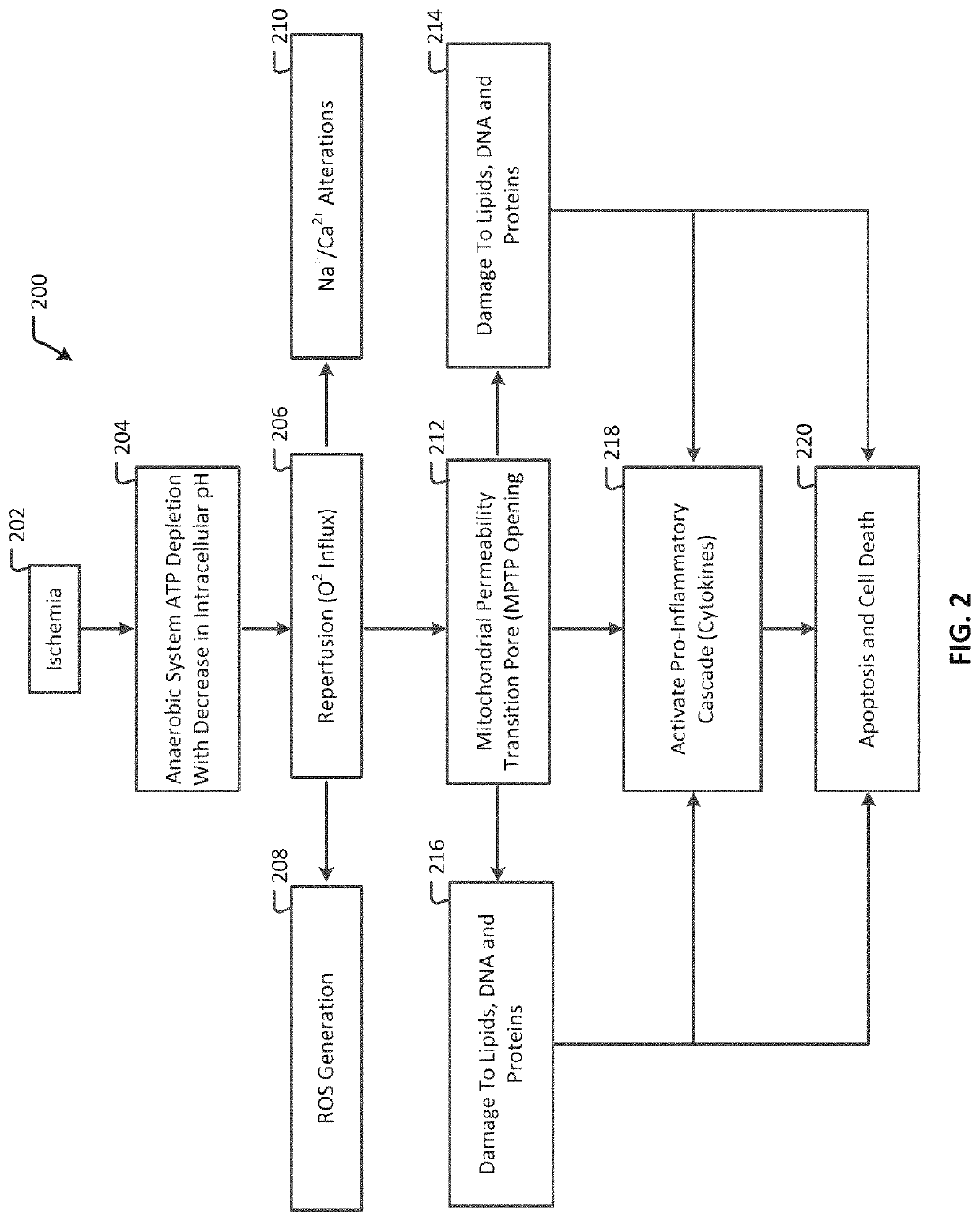Expert associations-based treatment system for reducing tissue damage from reperfusion injury
a tissue damage and association technology, applied in the field of physical therapy, can solve the problems of reducing the delivery of oxygen and blood flow, the art has not advanced very far beyond the investigatory stage, and the death of healthy tissues, so as to facilitate occlusion and reduce damage to musculoskeletal tissu
- Summary
- Abstract
- Description
- Claims
- Application Information
AI Technical Summary
Benefits of technology
Problems solved by technology
Method used
Image
Examples
working example 1
[0109]FIG. 8 shows a TAPN framework box that may be provided by reporting from a computer database for use in guiding practitioners. The taxonomy code 801 of “1.1.9” identifies System 1 which is the lower extremity, Segment 1 which is a femoral Segment, and a Structure 9 which is pectineus muscle. This taxonomy is also related as a segue structure 802 indicating that there is fascial connectivity to System 5 which is the Pelvic, Abdominal and Visceral System. The Touch row 804 provides useful information concerning the origins, insertions, blood supply and innervation for use as a reference tool in order to guide palpation of the correct structure and review anatomy according to Phase 601 (see FIG. 6A). The Activation row 806 corresponding to Phase 605 of FIG. 6A identifies HP1 808 for the pectineus which is the femoral artery. Note that the star 808 pictorially denotes a hand placement position HP1 for Activation. Row 806 describes the vector as occurring to the posterior indicatin...
working example 2
[0121]FIG. 15 shows a TAPN framework box 1500 that may be provided by reporting from a computer database for use in guiding practitioners. The taxonomy code 1502 of “2.1.1” identifies System 2 which is the upper extremity, Segment 1 which is a pectoral Segment of System 2, and a Structure 9 which is the pectoralis major muscle of Segment 1. This taxonomy is also related as a segue structure 1504 indicating that there is fascial connectivity to System 3 which is the Spine and Thorax System. The Touch row 1506 corresponds to Phase 601 of FIG. 6A and provides useful information concerning the origins, insertions, blood supply and innervation for use as a reference tool in order to guide palpation of the correct structure and review anatomy according to Phase 601 (see FIG. 6A). The Activation row 1508 corresponding to Phase 605 of FIG. 6A associates HP1 1510 with the pectoralis minor, specifically at the 2nd section of the axillary artery at the pectoralis minor. The Activation row 1508...
working example 3
[0127]FIG. 20 shows a TAPN framework box 2000 that may be provided by reporting from a computer database for use in guiding practitioners. The taxonomy code 2002 of “3.5.1” identifies System 3 which is the Spine and Thorax System, Segment 5 which is the Extrinsic Lumbar Segment of that System, and Structure 9 which is the Lattisimus Dorsi Origin of the Extrinsic Lumbar Segment. This taxonomy is also related as a segue structure 2004 indicating that there is fascial connectivity to Systems 1, 2 and 5. The Touch row 2006 provides useful information concerning the origins, insertions, blood supply and innervation for use as a reference tool in order to guide palpation of the correct structure and review anatomy according to Phase 601 (see FIG. 6A). The Activation row 2008 corresponding to Phase 605 of FIG. 6A lists HP1 2010 as being over the thoracodorsal artery with latissimus insertion at the inferior angle of the scapula. A second hand placement position HP2 2012 for Activation; how...
PUM
 Login to View More
Login to View More Abstract
Description
Claims
Application Information
 Login to View More
Login to View More - R&D
- Intellectual Property
- Life Sciences
- Materials
- Tech Scout
- Unparalleled Data Quality
- Higher Quality Content
- 60% Fewer Hallucinations
Browse by: Latest US Patents, China's latest patents, Technical Efficacy Thesaurus, Application Domain, Technology Topic, Popular Technical Reports.
© 2025 PatSnap. All rights reserved.Legal|Privacy policy|Modern Slavery Act Transparency Statement|Sitemap|About US| Contact US: help@patsnap.com



